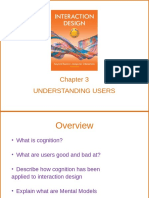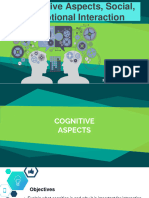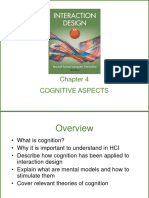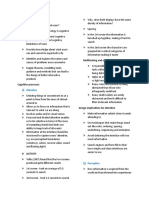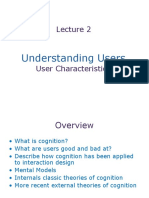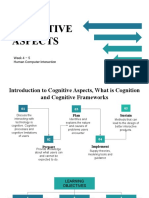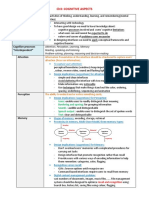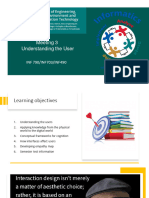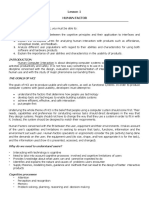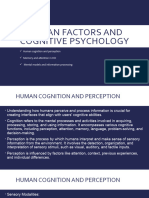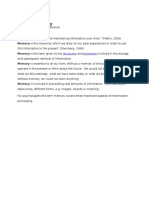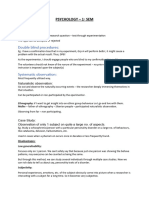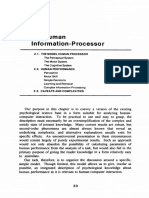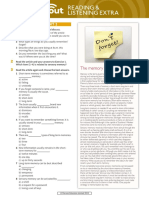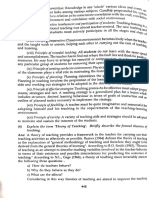0% found this document useful (0 votes)
26 views54 pagesChapter3-Understanding Users Cognition
Chapter 3 discusses cognition, defining it as the mental process of acquiring knowledge through thought and experience. It explores various cognitive processes such as attention, perception, memory, and their implications for interaction design, emphasizing the importance of mental models and the distinction between experiential and reflective cognition. The chapter also highlights design strategies to enhance user experience by accommodating cognitive limitations and promoting effective learning and memory retrieval.
Uploaded by
xepon84729Copyright
© © All Rights Reserved
We take content rights seriously. If you suspect this is your content, claim it here.
Available Formats
Download as PDF, TXT or read online on Scribd
0% found this document useful (0 votes)
26 views54 pagesChapter3-Understanding Users Cognition
Chapter 3 discusses cognition, defining it as the mental process of acquiring knowledge through thought and experience. It explores various cognitive processes such as attention, perception, memory, and their implications for interaction design, emphasizing the importance of mental models and the distinction between experiential and reflective cognition. The chapter also highlights design strategies to enhance user experience by accommodating cognitive limitations and promoting effective learning and memory retrieval.
Uploaded by
xepon84729Copyright
© © All Rights Reserved
We take content rights seriously. If you suspect this is your content, claim it here.
Available Formats
Download as PDF, TXT or read online on Scribd
/ 54

